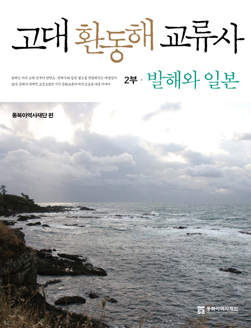Publication
- Date2011.06.20
- Hit1080

1. All rights of the contents and the electronic files in the Webpage are reserved for the Northeast Asia History Foundation.
2. No part of the Webpage may be reproduced, stored in retrieval system, or transmitted, in any form or by any means, without the prior permission.
Diplomatic History of Ancient States surrounding the East Sea Ⅱ
Northeast Asian History Foundation (Ed.)
4x6 Modification / 293 pages / 2010 / KRW15,000 (US $13 each)
ISBN 978-89-6187-179-2 ISBN 978-89-6187-180-8
Before the establishment of ancient states, people living near the shores of East Sea engaged in exchanges with each other through seaways. It was in late 6th century when East Sea began serving as a channel for international exchanges and communication on the national level. Relations between Goguryeo and Wae across East Sea were followed by exchanges between Balhae and Japan. The title provides basic information regarding research on exchanges between Goguryeo/Balhae and Japan. The authors from both countries wrote articles for the title, so that readers can look at the historical exchanges from different perspectives. Also, the title focuses on identifying the remains and artifacts in Japan.
Table of Contents
Ch. 1 : People crossing East Sea and their role
1. Exchanges between Balhae and Japan
2. King Mu of Balhae and Fujiwara
3. Magistrate(守令) of Balhae
4. Buddhist monks - Balhae monks (Injeong, Jeongso) and Japanese monk (Reisen)
5. Perception of the An Shi Rebellion in Balhae and Japan (in mid-8th century)
Ch. 2 : Traces of passages and exchanges
1. Kraskino Fortress and Fukura Port
2. Sanggyeongseong and Heijokyo
3. Arrival of Balhae shipts
4. Shinto shrines and marine myths
Ch. 3 : Cultural exchanges and origin
1. Gaguyeongheombuljeonjonseung Dharani(加句靈驗佛尊勝 陀羅尼記) in Isiyanaji(石山寺)
2. Artifacts excavated in Pallyeon Castle (donated by Saito Masaru and held by Fukui Prefectural Museum of Cultural History)
- No Data.
